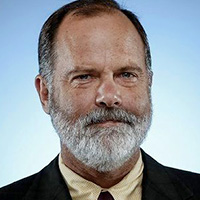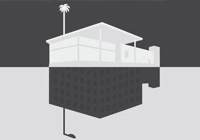THE RECENT PAST HAS OFFERED PRECIOUS LITTLE OPPORTUNITY TO think about the future. Beginning in early 2020, COVID-19 posed such an immense and uncertain challenge that it was difficult to think weeks in advance, much less months or years. Indeed, the entire Trump presidency was so erratic and unpredictable that it made living in the present a political necessity. Now, with at least some relief from those catastrophes, there is at last a chance to return to looking ahead — a luxury that is doubly valuable when it comes to thinking about the future of Los Angeles.
This is a region that foreshadows much of what awaits the United States — in culture, food, music and politics. It is a city of immigrants and diversity, the home of an emerging Latino/a majority and of rapidly evolving values. It is a laboratory of the American future. Its recent past offers stark lessons in the possibility and rapidity of change. Consider this: In the living memory of L.A.’s older residents, this city and its suburbs were a bastion of Republican politics and a largely white, conservative, anti-labor alternative to its more liberal and labor-friendly counterpart, San Francisco.
Today, Los Angeles is home to a dynamic labor movement and vigorously progressive politics. It is solidly committed to environmental protection and economic justice. It is a leader in fighting climate change and on raising the minimum wage. In only two generations, Los Angeles has gone from Mayor Sam Yorty, a blowhard conservative, to Mayor Eric Garcetti, a gentle and articulate liberal. And it now confronts its future post-Garcetti; he is preparing to leave the office to a successor.
Every single one of the city’s elected officials is either a Democrat or an Independent (Republicans have left the building). There are political differences, of course, but they divide moderates from liberals — conservatives are on the outside — or split officials based mostly on the interests of their districts or their relationships. There are no longer any elected voices championing gun ownership or smokestack industries. No one in modern Los Angeles leadership blames immigrants for the area’s troubles, at least out loud. Those debates, still lively on the national level, are part of L.A.’s past.
But what of the future? That’s the question to which we turn with this issue of Blueprint.
It’s hard to predict the future, of course. Ten years ago, who would have said Donald Trump might win the White House and preside over the worst health disaster in the nation’s modern history? And yet, some of the fundamentals of Los Angeles are likely to endure. The Los Angeles of tomorrow will be populated by more people arriving from Latin America and Asia; it will need to provide more homes for families; it will be sick of traffic. These are already staples of daily life. But it will need to respond even more thoughtfully to the environment, and the city will look and feel different to those who live and work here.
To consider these features of the region’s future — and of the future that awaits the rest of the nation — we have enlisted some of this area’s finest writers and deepest thinkers. I’m proud to present them here.
We hope you enjoy and respond to their ideas with appreciation, of course, but also with concerns or amendments — and, most of all, with action.
Here’s to our future.
JIM NEWTON
Editor-in-chief, Blueprint
























